An iconic Japanese Hi-Fi brand, for a long time Onkyo has been working alongside TEAC, annother Japanese manufacturer favoured by audiophiles.
The two brands share their potential for development and production, certain devices sharing fundamental electronics albeit tailored to the functional choices and preferences of each brand with regards to different devices such as operational amps.
The Onkyo C-N7050 network player with CD player, not dissimilar to a model commercialised by TEAC, reads digital audio files up to 24-bit at 192kHz and DSD64/DSD128. It can read from removable storage devices including USB and disc, and can be connected to external storage via two USB A ports.
The C-N7050 uses the Onkyo VLSC™ treatment process (sampling circuit with linear vector) for clean and clear analogue signals and can be controlled via a remote or an app available on iOS and Android devices.
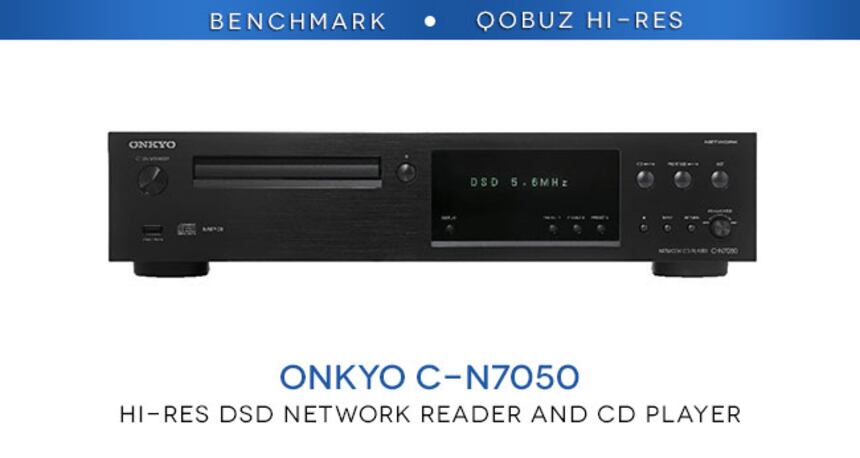
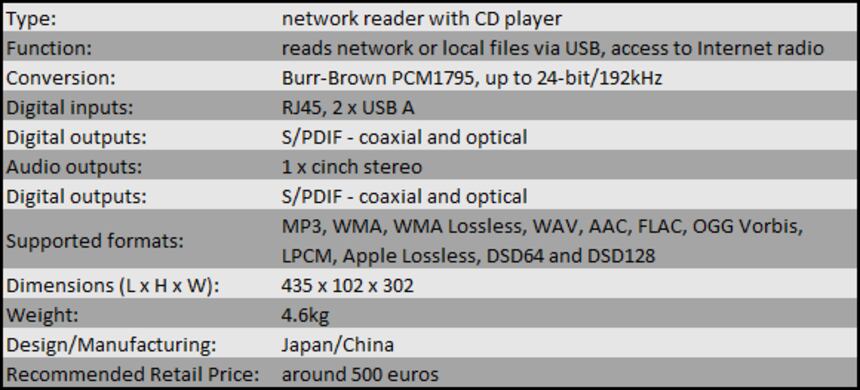
Presentation
Available in a silver or black finish, the C-N7050 has a serious but perfectly adequate design.

Its casing is realised in plastic resin giving an uncanny imitation of anodised brushed aluminium. The front face hosts the on/off button, a USB A port, and the disc drawer along with an open/close button.

The display is behind a large plexiglass panel, upon which are three small buttons controlling the information shown (including format and quantification of files being read). Three more buttons to the right give access to radio.
To the right are controls for the CD player and the frontal USB input, with another control allowing to directly access the network.
The lower buttons include the "stop" (for both CD and USB), the input selector, and the return key operating in conjunction with the navigation dial to scroll through the menu or between tracks.
The remote includes all controls available on the front of the casing as well as additional functions including shuffle, repeat or access to a specific track on a CD via number.
Connectivity
The connectivity is performed from the RJ45 plug allowing access to the network, a second USB A input, a coaxial and an optic plug outputting network signals read on the network or from the USB in S/PDIF format, and the stereo output. That should be enough to satisfy most discerning audio amateurs!

Realisation
Below you can see the internal electronics of the C-N7050, which have a rather traditional structure with the mechanics for the CD player and the transformer found in the left part of the box, whilst the power supply is in the middle and the electronic mounted decoding circuit is to the right.
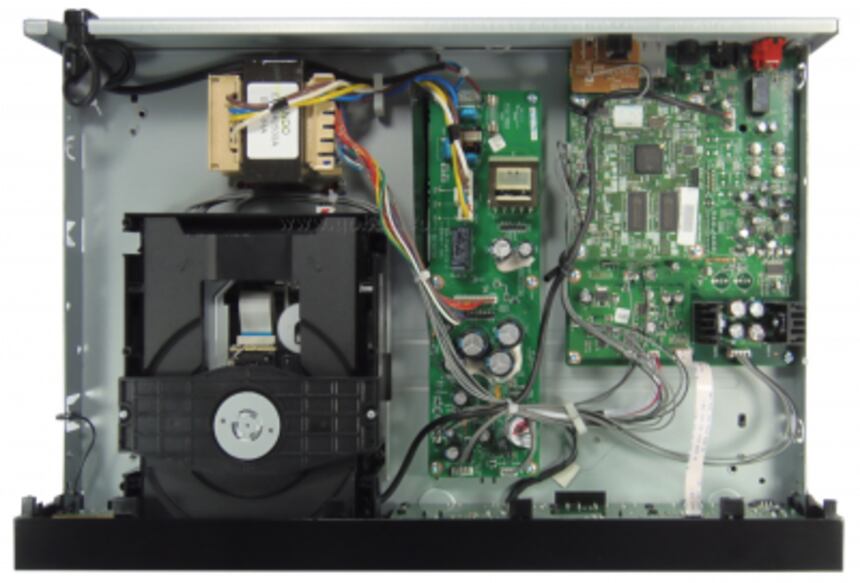
The various wire tapes interconnecting the circuits are maintained by bands or laminated metallic flanges.
The linear power supply has three electrochemical capacitors of 4700 μF/25V taking care of principle filtering. The standby power and its small transformer are on the same circuit.
On the principle circuit (from which we removed the network card) you can see the 32-bit Renasas V850 DSP (Digital Signal Processor) which processes the digital signals by VLSC™.
Near the DSD are two regulators, a 78M05 (+5V) and a BA033 (+3.3V) as well as a Burr-Brown PCM9211 digital transmitter receiver circuit which transmits digital signals from the network card and USB A inputs to the DSP in the form of bus I2S.
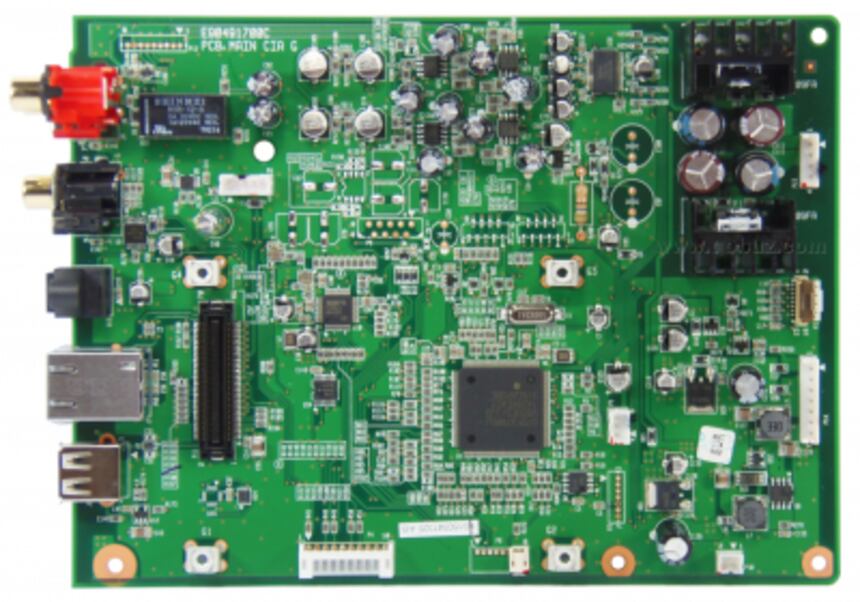
The digital-to-analogue conversion chip is a Burr-Brown PCM1795 (top-right in photo) accepting PCM digital signals up to 32-bit/192kHz, as well as digital DSD signals.
The PCM1795 has differential current outputs on each channel and two Texas Instruments N5532 operational amplifiers convert the current signals to voltage signals.
These signals are then cleaned by active filters constructed around low-noise NJM4580 operational amplifiers (on the left of the N5532), made by the New Japan Radio Company (JRC).
To the right of the PCM1795 are 7809 (+9V) and 7909 (-9V) regulators, providing symmetrical voltages to the operational amps. They are mounted on radiators and surrounded by four electrochemical capacitors of 470μF/25V.
On the reverse of the card is a 74LV125 circuit with four buffers which boost the bus I2S, as well as two NJM480 operational amps boosting the gain of signals before they are sent the the Cinch plug outputs.
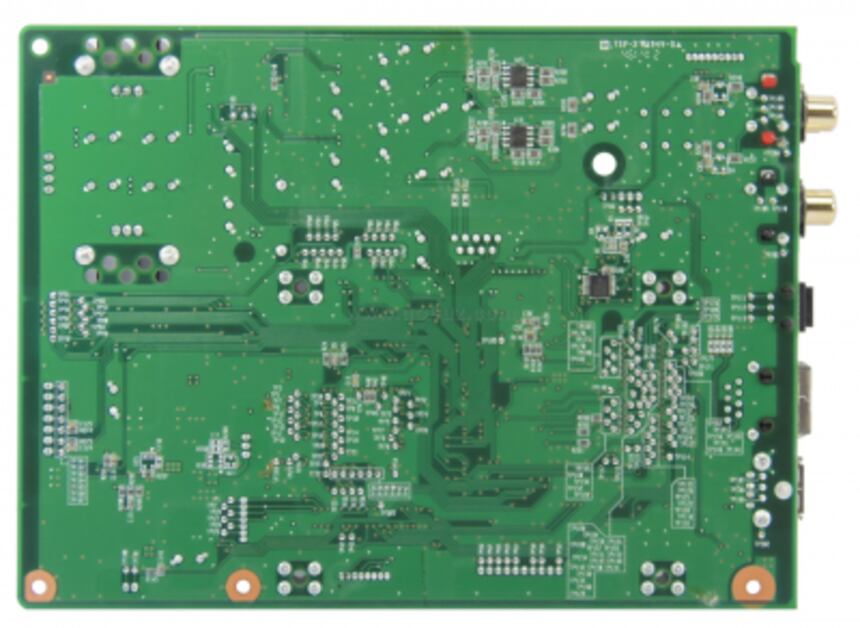
The network card has a Micrel KSZ8081 transceiver (at the bottom of the photo, near the centre) to liaise with the network, and the signal decoding is performed by a Texas Instruments D830K013DZ digital signal processor (DSP).
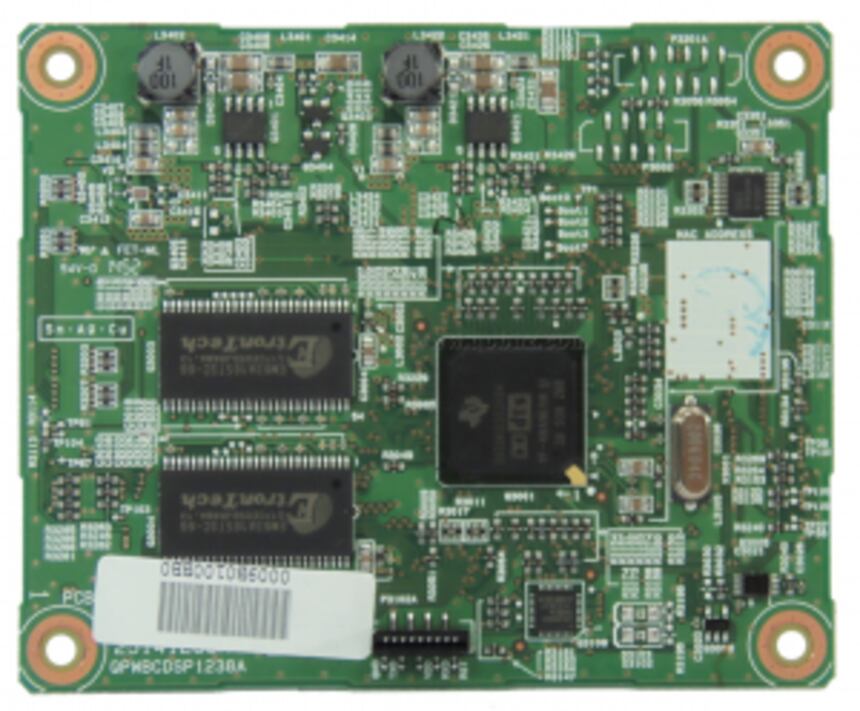
On the other side of this card you can see the memory, containing instructions (aka code) and marked C-N7050.
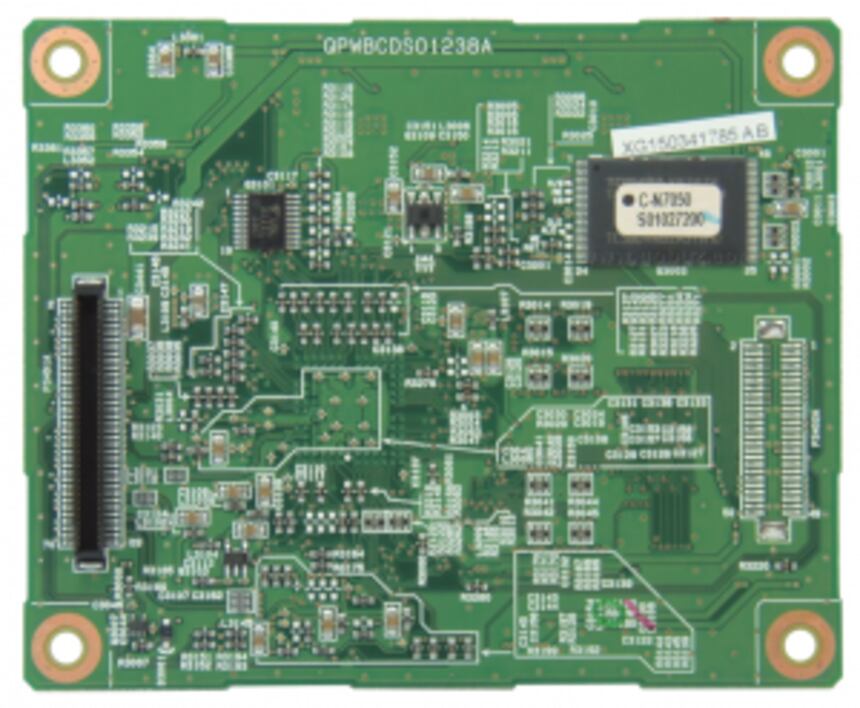
Use and listening
The C-N7050 is easily controlled using the remote, and is limited mainly by the display.
However the Onkyo Remote app, which we installed on an Android smartphone, had a good interface and made the C-N7050 much easier to use. Here are a few screenshots showing how it works:
- Select the network player C-N7050 among devices detected
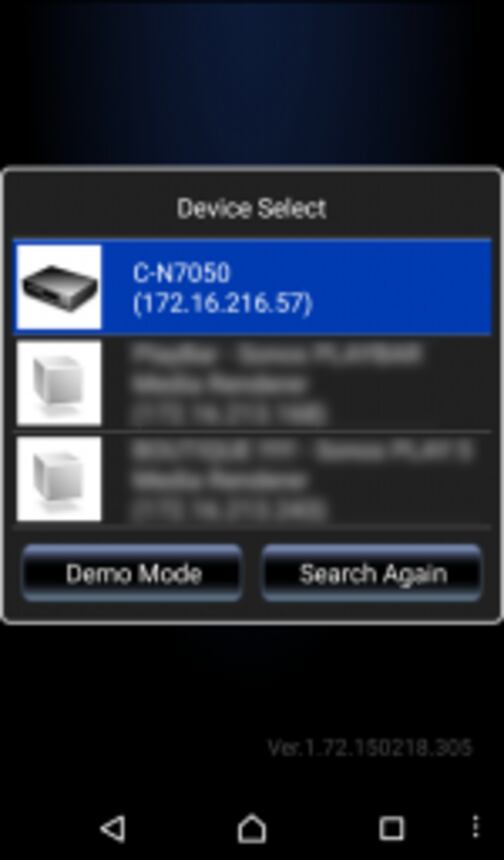
- Welcome, Net is show as default and by clicking here on the screen you can show the inputs
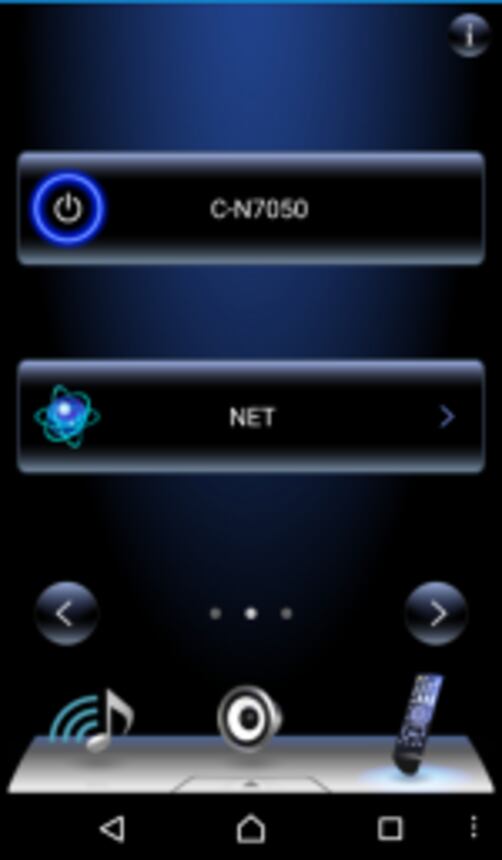
- Select input
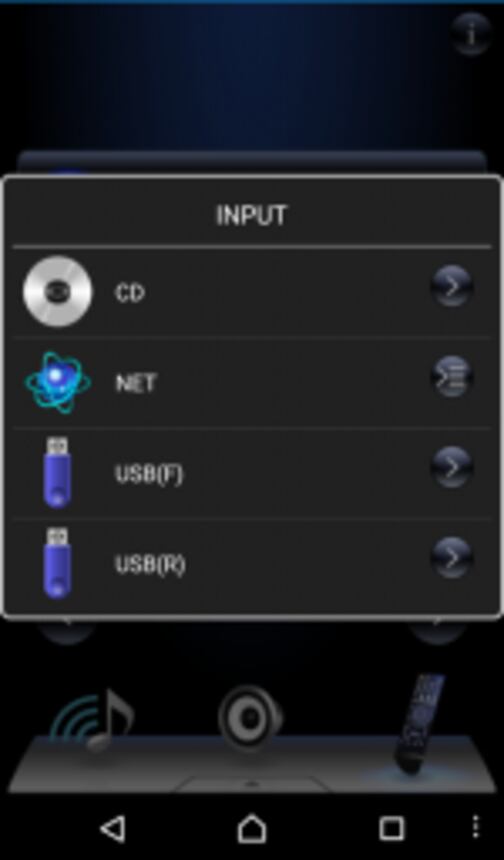
- Choose 'Net' to access options
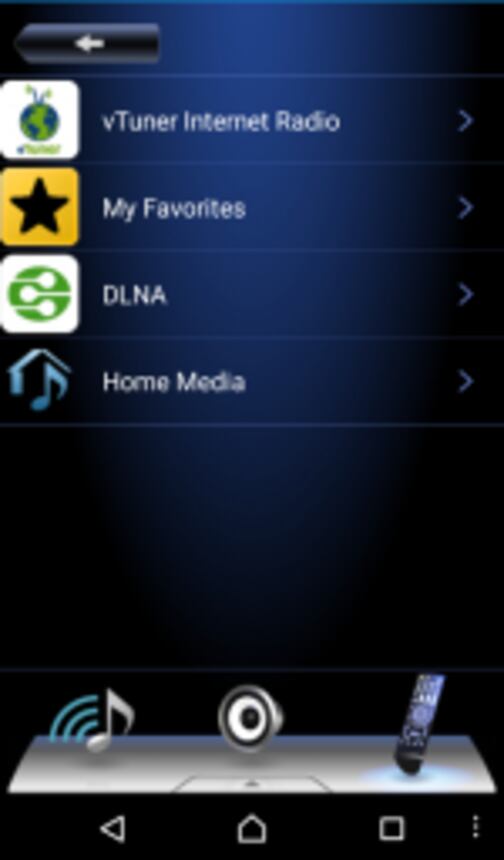
- The option DLNA shows compatible devices, including dont Diskstation (NAS Synology server) on which is stored our digital audio files
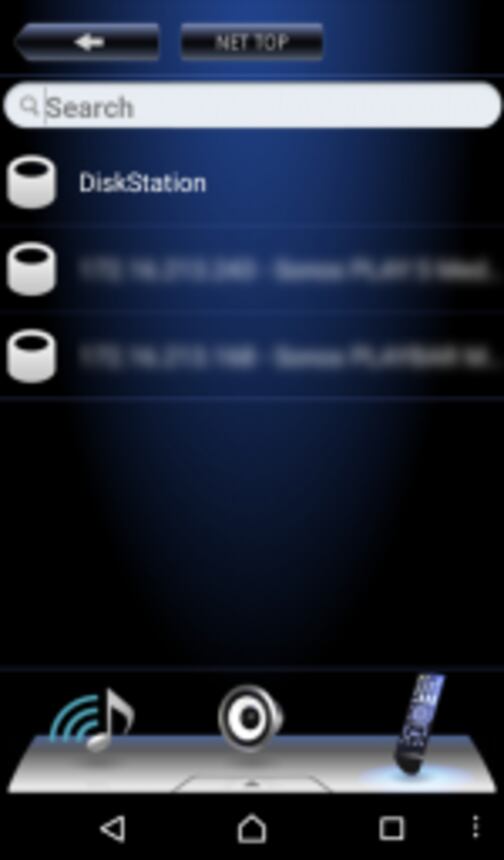
- Choosing Diskstation shows stored folders
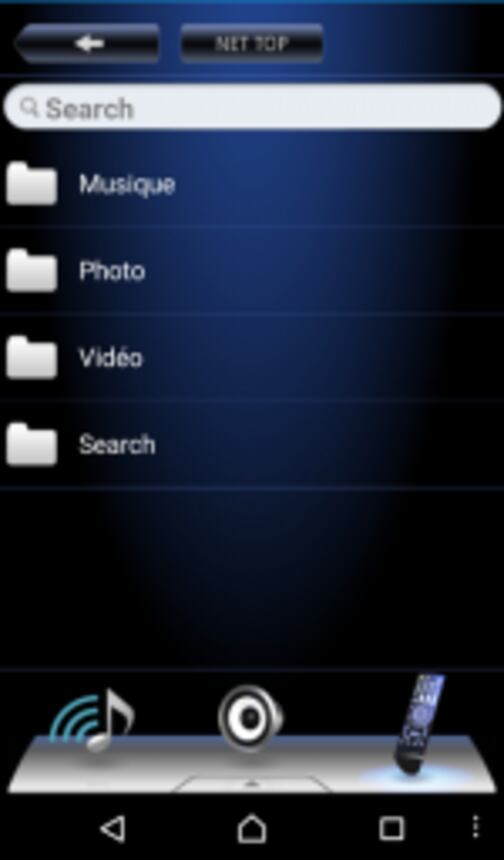
- Select folder Music
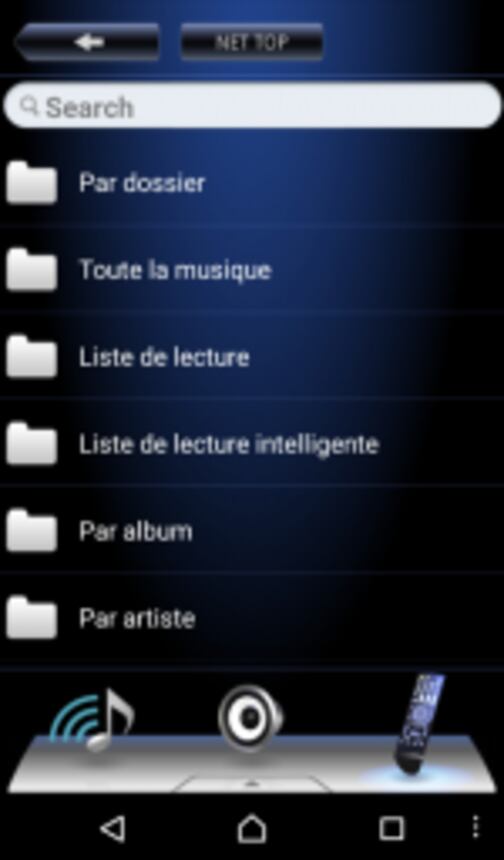
- Displays sub-folders
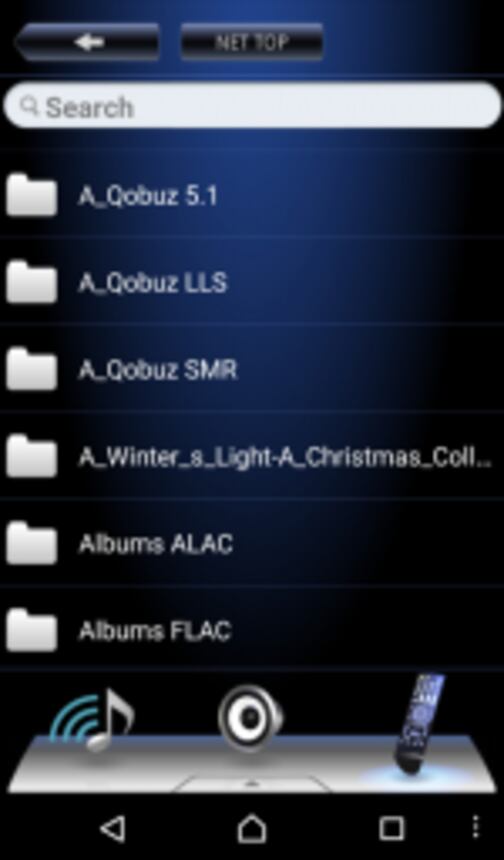
- Tracks within sub-folders
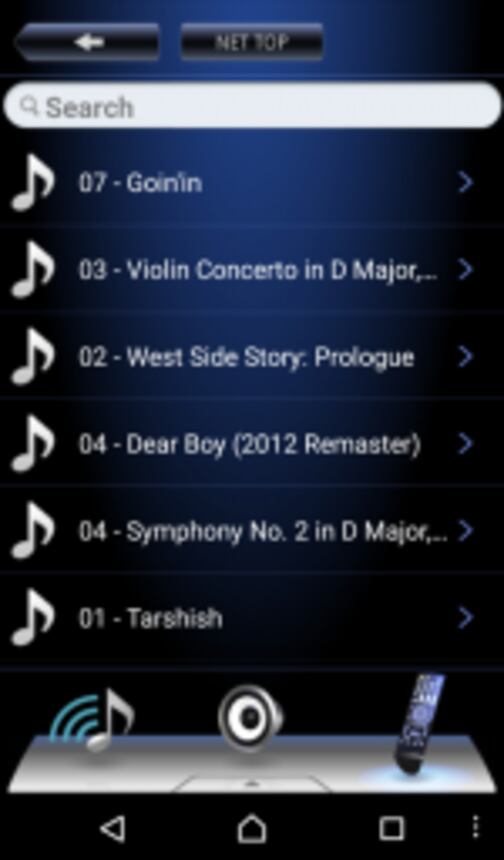
Play selected track
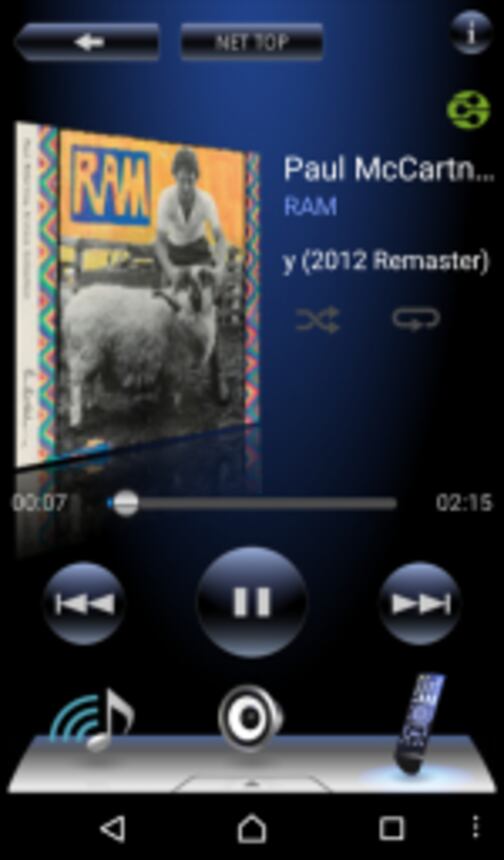
- Select "i" to show more information
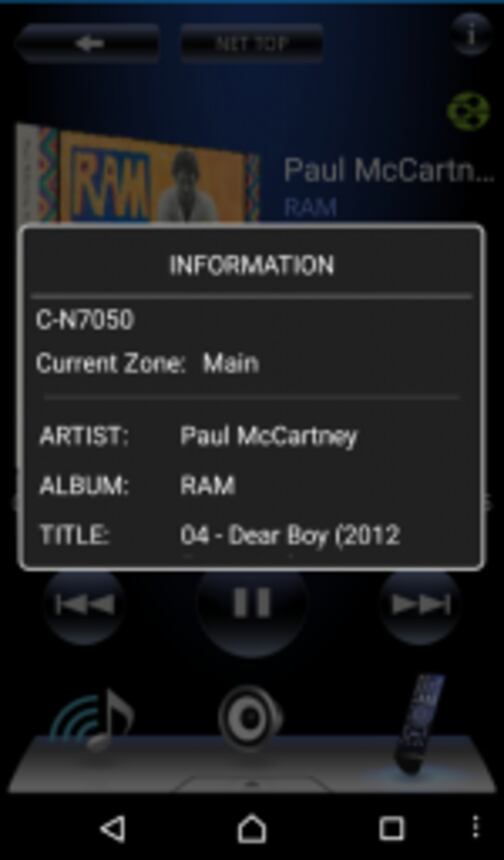
Listening to files from a USB, we chose Peter Schmoll und seine Nachbachn from the album Ouvertures by Weber, recorded by the Tapiola Sinfonietta lead by Jean-Jacques Kantorow. The sound restitution delivered by the Onkyo C-N7050 network player has finesse, dynamics and respects the timbres of the orchestra and is really rather good.
There is a lot of subtlety in the reproduction of My Sweet Lord from George Harrison's Let It Roll. There's a certain brightness to the sound, and a lot of communication going on with the electronics. Very nice!
Using our NAS Synology player, Morning from the album Morning Phase by Beck has a strong, ample restitution which shows all the intricacies and colour of the instrumentation. Young Girls from Beck's Sea Change is similarly impressive, with the emotion of the track conveyed with ease.
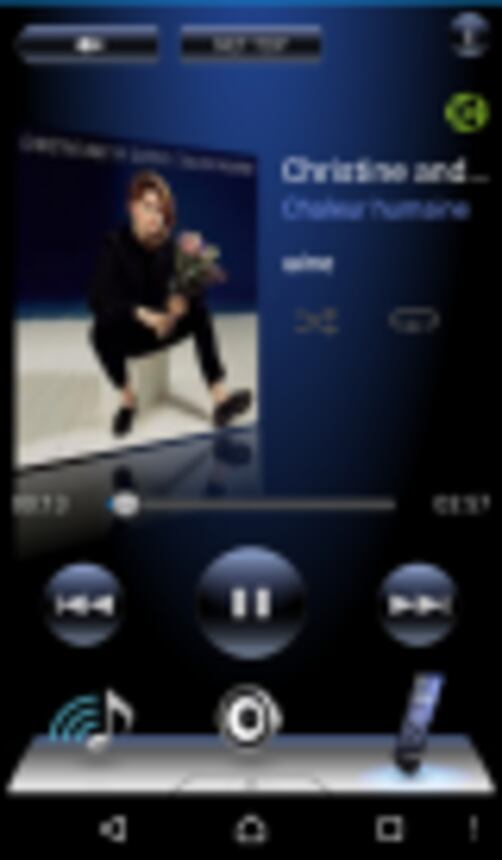
The restitution is very clear but still full with
To test the CD player we chose the rhapsody España de Chabrier from Paul Paray's interpretation leading the Detroit Symphony Orchestra. It sparkles brightly and its sunny disposition spreads to the ringing of the triangles and the typically Latin chords in the brass, which the C-N7050 brings to live with much elegance.
To conclude, the Onkyo C-N7050 network player is a no-frills device with a user-friendly app, playing Hi-Res audio files on a network or USB. Its audio results are subtle and a pleasure to listen to. Definitely a device we'd recommend!
Thanks to Son-Vidéo.com for lending us the C-N7050.
We were unable to test the DSD because only extensions .dsf were readable by the C-N7050 and we only had .dff files available.
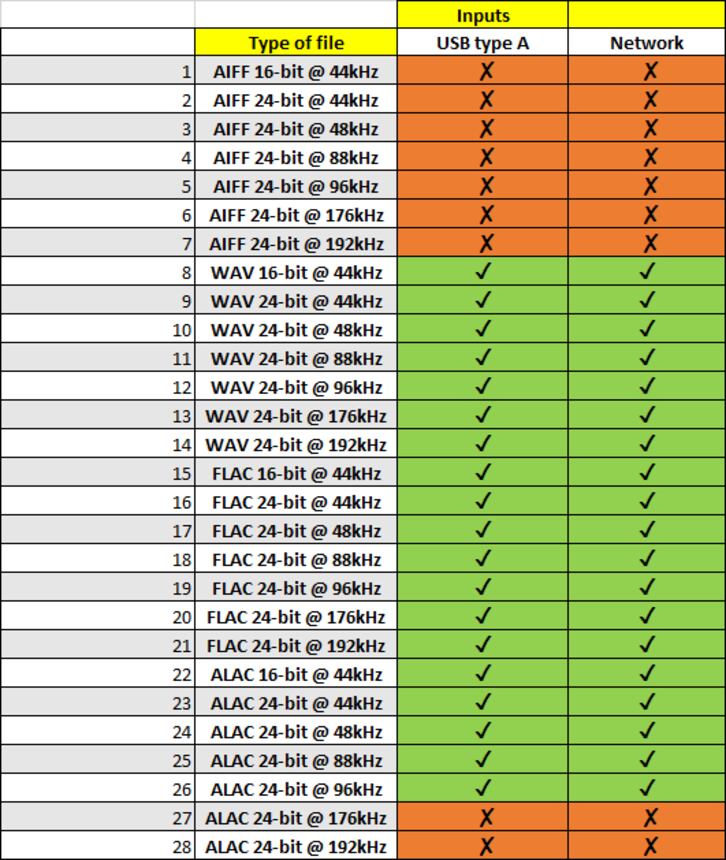
To keep up with the latest news, join us on Facebook or follow us on Twitter
If you are a manufacturer, importer, distributor or actor in the domain of sound reproduction and you wish to contact us, please do so using the following address: newstech@qobuz.com
If you are passionate about our Hi-Fi Guide and you wish to contact us, please do so using the following address: rubriquehifi@qobuz.com
Original article by PHILIPPE DAUSSIN Translation by RACHEL HARPOLE